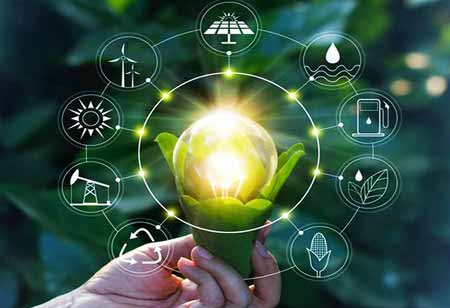Thank you for Subscribing to Energy Business Review Weekly Brief
Examining the Sustainability of Wind Energy and Nuclear Energy
In addition to the needs of life, energy is one item that humanity will always require

By
Energy Business Review | Thursday, January 16, 2025
Stay ahead of the industry with exclusive feature stories on the top companies, expert insights and the latest news delivered straight to your inbox. Subscribe today.
This article aims to explore the sustainability of both wind and nuclear energy and give insights about these energies.
Fremont, CA: In addition to the needs of life, energy is one item that humanity will always require. From the earliest days of learning to control fire to the Industrial Revolution, we have always looked for methods to use energy to improve our lives. This is even more evident in the present era when everything is digital.
We must employ the best sources available because we desperately require energy. Traditional energy sources like coal and oil have a finite supply and will gradually run out. To ensure we can meet our ever-increasing energy needs, we must embrace more sustainable energy sources. Furthermore, it is crucial to mitigate the impact of climate variations resulting from the emission of greenhouse gases (GHGs) and carbon dioxide (CO2), which are polluting consequences of conventional energy production.
How Eco-Friendly is Wind Energy?
Among the most sustainable energy sources now in use is wind energy. It uses the force of air flowing naturally to spin wind turbines producing electricity. This is fantastic since it produces energy in a renewable manner without emitting any greenhouse gases.
The following are some of the best qualities that make wind energy sustainable:
- No gasoline additions
- Not a single GHG, including CO2
- Endless supply of energy from the wind, which is derived indirectly from the sun
- Possibility of long-term use
- Possibility of global implementation
Furthermore, wind energy can be utilized as a carbon offset to reduce total emissions from other sources of energy.
How Eco-Friendly is Nuclear Energy?
Depending on your perspective, nuclear energy can be a very sustainable energy source. Nuclear power is as abundant as renewable energy when it comes to not generating carbon dioxide. Additionally, nuclear energy provides the benefit of continual reliability, which intermittent renewable energy sources cannot match. Atomic energy can be employed as a baseload power source.
For this reason, many energy professionals and climate activists strongly advocate increasing nuclear capacity to meet our carbon-free energy targets. When combined with renewable energy sources, nuclear power can offer a plentiful baseload power source that can help us meet our expanding energy needs in a manner that is not currently possible with other energy sources.
But there's a significant catch: radioactive waste. This is the point at which calling nuclear energy “sustainable” comes under intense debate since radioactive waste poses a substantial risk to the environment. Around the world, there is a strong anti-nuclear sentiment, particularly in the wake of well-publicized tragedies like Fukushima and Chornobyl.
Which one is it, then? Can nuclear energy be sustained, or is it not? The only way to address this matter is through a new kind of nuclear technology that is almost ready for use. Small Modular Reactors (SMRs) combine all the benefits of conventional atomic power with nearly none of the drawbacks.
These reactors produce carbon-free power without radioactive waste or the risk of catastrophic meltdowns brought on by very high core temperatures. In addition, they are less expensive and simpler to install than large-scale reactors since they are modular and scalable. These next-generation SMRs are unquestionably on the side of sustainability, although traditional nuclear energy is unsure of its place.






